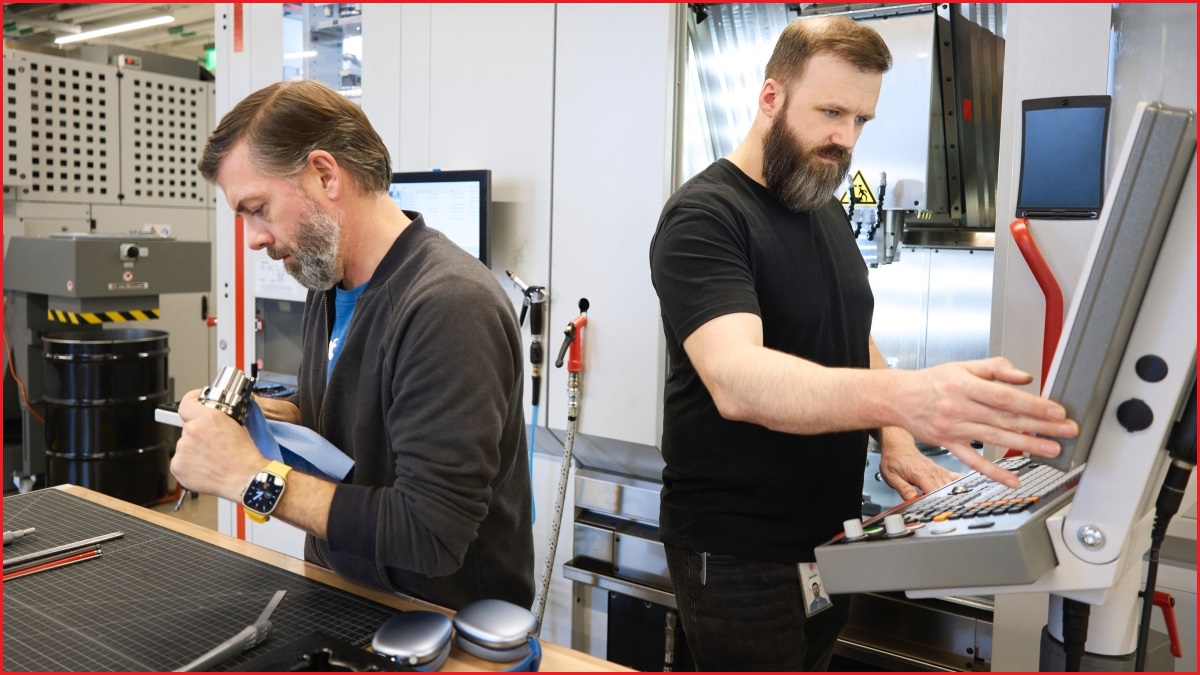United States President Donald Trump has threatened Apple, Samsung, and other smartphone-makers with tariffs of “at least 25 per cent”, unless they move their production lines from Asia to the US.
The tariffs would likely increase the cost of smartphones in the US — and potentially more broadly — if tech companies chose to pass on the costs to consumers instead of paying a likely higher price to shift their complex manufacturing systems, analysts said.
Trump reportedly met with Apple CEO Tim Cook at the White House on Tuesday, US time, where they discussed Apple’s ongoing work moving much of its assembly lines from China to India.
Goods imported into the US from China currently face tariffs of 30 per cent, while goods from India receive the 10 per cent "baseline” tariff which the White House has imposed on most countries, including Australia.
In a post on his Truth Social platform on Friday, Trump said, “I have long ago informed [CEO] Tim Cook of Apple that I expect their iPhone’s [sic] that will be sold in the United States of America will be manufactured and built in the United States, not India, or anyplace else.
“If that is not the case, a tariff of at least 25% must be paid by Apple to the U.S.
“Thank your [sic] for your attention to this matter!”
Later on Friday, Trump told reporters, “[Cook] said he’s going to India to build plants.
“I said, that’s okay to go to India, but you’re not going to sell into here without tariffs, and that’s the way it is.”
Trump said the 25 per cent tariff would begin at the end of June and would also apply to other smartphone-makers selling their products in the US, such as Samsung.
“It would be also Samsung and anybody that makes that product, otherwise it wouldn’t be fair,” he said.
Samsung declined to comment when contacted by Information Age, while Apple did not respond before deadline.
Shares in both companies were down 3 per cent and 6 per cent respectively over the past five days.
Consumers could face higher prices
Apple has warned it faces around $1.4 billion ($US900 million) in tariff-related costs in the June quarter, while industry group the Consumer Technology Association (CTA) has forecast smartphone prices in the US could rise by 31 per cent.
CTA chief executive and vice chair, Gary Shapiro, said Americans would end up paying for Trump’s tariffs.
“Higher tariffs don’t just affect businesses, startups and founders — they’re a pocketbook issue for American families, potentially raising the cost of the tech Americans love and rely on daily,” he said earlier this month.

US consumers could see smartphone prices rise by around 30 per cent, according to the Consumer Technology Association. Images: Shutterstock
Trump’s efforts to return jobs to the US through tariffs on goods, including technology, have caused significant market volatility.
Since first announcing global tariffs in early April, Trump has scaled back some of his threats and issued 90-day pauses, while reducing China’s 145 per cent tariff to 30 per cent until at least August but keeping a 10 per cent baseline tax on most imports into the US.
While tech products were initially granted an exemption from the tariffs, Trump had promised to impose a new levy on such devices, which analysts suggested had already contributed to higher prices for some consumer electronics, including video game consoles.
Trump's 'fairy tale’ US-made iPhone
Many technology industry analysts have been critical of Trump’s suggestion that Apple could move its iPhone production to the US, citing the immense amount of time, money, and expertise that would require.
Wedbush analyst Dan Ives described Trump’s idea of US-made iPhones as “a fairy tale that is not feasible”, and suggested the devices would cost around $5,400 ($US3,500) each if the president's dream came true.
While Apple still assembles a large portion of its iPhones in China, the company has been moving some of its production to India and Vietnam in recent years — where Samsung already does most of its smartphone manufacturing.
Most iPhones sold in the US in the June quarter would be assembled in India, Cook said during an earnings call earlier this month.
“For the June quarter, we do expect the majority of iPhones sold in the US will have India as their country of origin and Vietnam to be the country of origin for almost all iPad, Mac, Apple Watch, and AirPods products sold in the US,” he said.
“China would continue to be the country of origin for the vast majority of total product sales outside the US.”

Apple has committed to investing more than $767 billion ($US500 billion) in the US over the next four years. Image: Apple
US Commerce Secretary Howard Lutnick faced some ridicule last month when he suggested to CBS that the work of “millions and millions of human beings screwing in little, little screws to make iPhones” would come to the US and become automated.
He later said Cook told him that technology did not exist yet.
Cook, who donated $1.5 million ($US1 million) of his own money to Trump’s inauguration fund — as several other tech leaders also did — announced in February that Apple would invest more than $767 billion ($US500 billion) in the US over the next four years, including in manufacturing.
“We are bullish on the future of American innovation,” he said at the time.










